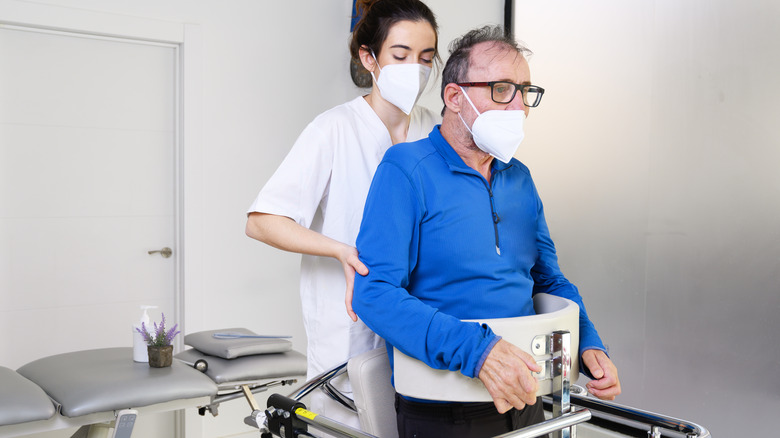How Is ALS Treated?
In the media, you may have come across information about amyotrophic lateral sclerosis (ALS) walks, which are fundraisers that aim to spread awareness about ALS. Maybe you learned about the disease through the "Ice Bucket Challenge" trend in 2014, which substantially helped annual funding for ALS research, says the ALS Association. Despite hearing about these fundraisers, you might not be sure what ALS is, or what treatment options are available for the condition.
According to the National Institute of Neurological Disorders and Stroke (NIH), ALS is classified as a neurological disease, as it impacts motor neurons that facilitate voluntary muscle movements, like chewing or walking. When someone has ALS, their motor neurons deteriorate and die, which causes their muscles to weaken and waste away because they are no longer receiving messages from the motor neurons and brain. In the early stages, someone might notice subtle changes like muscle cramps and muscle twitches, or trouble chewing and swallowing.
As the disease advances, symptoms of muscle weakness spread, explains the Mayo Clinic. A person with ALS may fall or trip, have trouble walking, experience changes in cognitive or behavioral function, or have slurred speech. There can be a wide range of symptoms that relate to which neurons have been affected by the disease.
Because the disease is progressive, it becomes worse over time. It is fatal, and there is currently no cure. However, there are treatments that aim to improve the quality of life of someone who is struggling with ALS.
Treatment options
When diagnosing ALS, medical professionals must first rule out other neurological disorders. To do so, the Mayo Clinic explains that someone who is suspected to have ALS may undergo a variety of diagnostic tests, such as an electromyogram (EMG), a nerve conduction study, a spinal tap, or a muscle biopsy.
If ALS is diagnosed, there are treatment options that can help manage symptoms and potentially extend life expectancy. According to UCSF Health, certain medications can be used for the treatment of symptoms. For example, gabapentin can be prescribed to minimize the pain associated with ALS, and amitriptyline can help make it easier to swallow saliva. As explained by the Mayo Clinic, the medication riluzole could potentially extend someone's life by up to six months.
Maintaining muscle strength and function for as long as possible can be achieved with physical therapy, notes Mayo Clinic. To move around, a patient may eventually need a brace, walker, wheelchair, or another device. Occupational therapy and adaptive equipment can support a patient in activities of daily living.
An individual with ALS may also benefit from speech therapy to make their speech more comprehensible, while learning other ways to communicate with others, such as through text-to-speech devices. In addition, seeing a psychologist or social worker could offer emotional support for the patient and their family.
Patients with difficulty breathing may receive devices to assist breathing or may choose to receive mechanical ventilation. In some cases, a feeding tube may be necessary for a person to receive adequate nutrition.


